Lewis and Clark
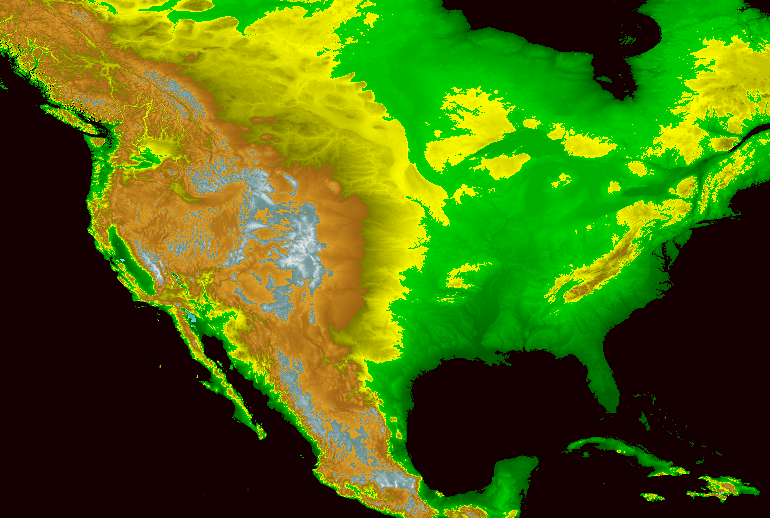
Thomas Jefferson assumed North America had symmetrical geography, and mountains west of the Mississippi would be similar to the Appalachians
Source: National Oceanic and Atmospheric Administration (NOAA), GLOBE: A Gallery of Images - Color North America
The 200th anniversary commemorations of the exploration of Meriwether Lewis and William Clark highlighted the portion of their trip from St. Louis to the Pacific Ocean and back. The Lewis and Clark National Historic Trail established by the US Congress in 1978 ended in Astoria, Oregon and started at St. Louis. In 2019, Pittsburgh was designated as the eastern end of the official trail, since Captain Meriwether Lewis had launched the expedition's keelboat there and floated it down the Ohio River to get to St, Louis.
However, their transcontinental journey started in Virginia and finished in Virginia. Some of Thomas Jefferson's planning was done at Monticello, and in 1806 Meriwether Lewis visited his mother in Charlottesville before meeting with President Jefferson in Washington.1
Long before Lewis and Clark were sent on their expedition in 1803, political leaders in Virginia had recognized the benefits of exploring and claiming territory for Virginia based on the Second Charter issued by King James I in 1609.
Throughout the 1700's, Virginia's governors sought to establish English authority through the supposed "right of discovery," through conquest, or through treaty with Natives Americans. Excluding France and Spain from the Mississippi River watershed would provide international benefits for England, and local benefits for Virginians. In particular, land companies organized by the Virginia gentry (such as the Ohio Company and the Loyal Land Company) could generate personal profits for well-placed Virginia officials - once England gained control of western lands and Virginia, rather than Pennsylvania or another colony, established its authority to manage land sales west and south of the Ohio River.
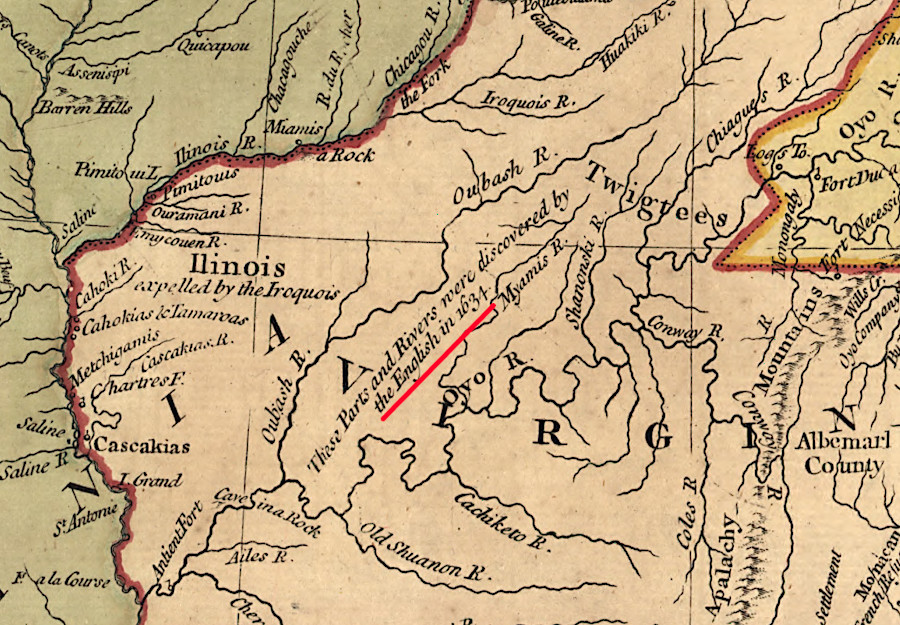
even after France ceded claims to the Mississippi River watershed in 1763, English mapmakers sought to validate ownership through a historically-questionable Right of Discovery claim
Source: Library of Congress, A new and accurate map of North America (1771)
After the American Revolution, far-seeing leaders also saw political risks for the new United States as settlers moved west of the Appalachians.
George Washington recognized the need to connect the population centers on the Atlantic coastline with the developing settlements in the Ohio and Mississippi River watersheds. He sought to build canals and economic links across the barrier of the Appalachians, to integrate those westerners into the political and economic life of the communities east of the Appalachians.
The Whiskey Rebellion revealed how limits to trade across the mountains affected political unity. Washington feared that westerners shipping goods down the Mississippi River could decide that it was in their interest to break away from the United States and form their own nation(s).
Another Virginian, Thomas Jefferson, sought to purchase Mobile and New Orleans in order to strengthen the economic and political connections between the East Coast and the settlers occupying lands in the Ohio, Tennessee, and Mississippi River valleys. Before concluding the Louisiana Purchase, Jefferson sent a group of explorers across the Mississippi River into what was technically Spanish territory. A voyage of discovery to the middle of the continent and to the Pacific Ocean coastline would allow the United States to strengthen its land claims by right of discovery, and clarify the value of such lands before proposing acquisition by conquest or purchase.
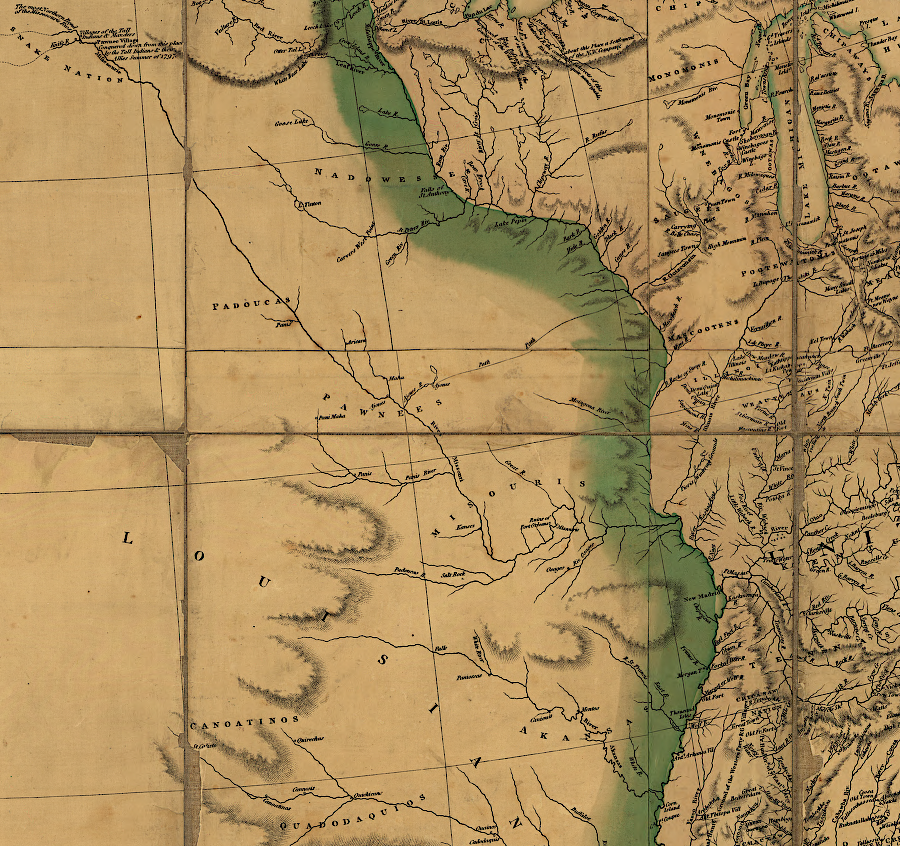
in 1802, territory west of the Mississippi River was essentially a mystery to residents of the United States
Source: Library of Congress, A map exhibiting all the new discoveries in the interior parts of North America (by Aaron Arrowsmith, 1802)
While Washington and Jefferson were visionary in their understanding of geopolitical strategy, others were insular in their perspective. The Virginia government at the start of the American Revolution, led by Governor Patrick Henry, focused on the threat of British attack in the Chesapeake Bay area. George Rogers Clark made a request in 1776 for supplying the Kentucky settlers with gunpowder to defend against raids by Indian allies of the British forces based in Detroit. The leaders in the new Williamsburg were reluctant to send resources to the western side of the state.
The leaders in the Virginia Convention could expect the Kentucky settlements to separate from Virginia, unless Virginia committed scarce gunpowder to protect the frontier. George Rogers Clark expressed the perspective of the frontier settlers in 1776: Virginia had to support the western settlements, if the western settlers were to stay loyal. Otherwise:2
- ...if a country were not worth protecting, it was not worth claiming.
The Virginia Convention knew British fleets and armies were a far greater threat in the Chesapeake Bay area, but finally agreed that the western settlements were important too.
George Rogers Clark was the older brother (by 18 years) of William Clark. When Thomas Jefferson tasked Meriwether Lewis with the responsibility of traveling to the Pacific Ocean and returning with intelligence about the western country, Lewis chose Clark as his co-leader.
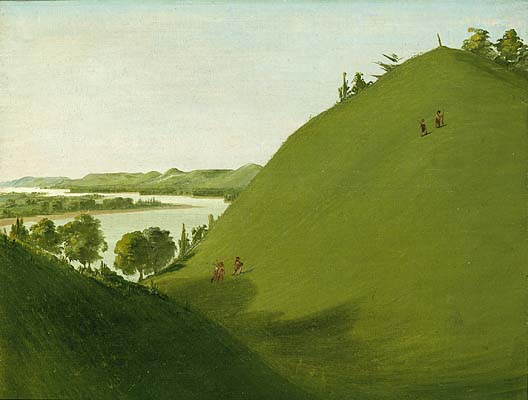
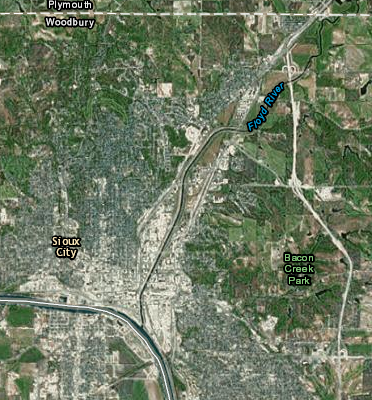
Sergeant Charles Floyd (the one member of the Lewis and Clark expedition who died on the journey) was buried on the Missouri River on August 20, 1804, on a bluff overlooking what is now Floyd River at Sioux City, Iowa
Source: Smithsonian Institution, Catlin Virtual Exhibition, Floyd's Grave, Where Lewis and Clark Buried Sergeant Floyd in 1804 and ESRI, ArcGIS Online
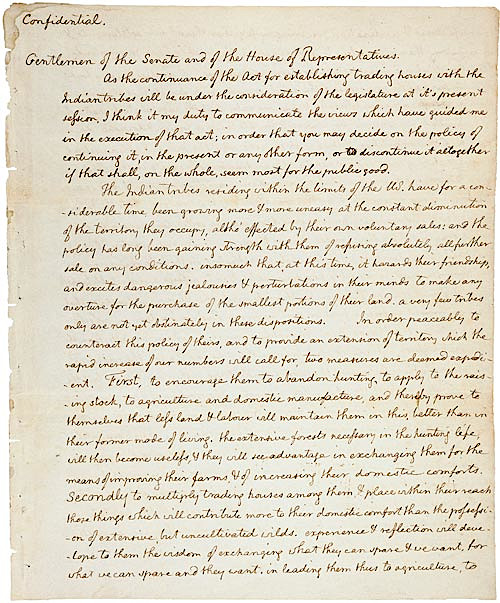
on January 18, 1803, President Jefferson asked Congress secretly to fund an expedition into lands west of the Mississippi River that were claimed by Spain
Source: National Archives, Jefferson's Secret Message to Congress Regarding the Lewis & Clark Expedition (1803)
Though Lewis and Clark have received much of the attention for their successful journey through the Louisiana Purchase, they were not an isolated expedition. They were not even the first European to cross the North American continent; that had been accomplished a decade earlier.
Alexander Mackenzie reached the Pacific Ocean at the mouth of the Bella Coola River in British Columbia on July 22, 1793. He then published a book about his expedition.
President Thomas Jefferson read it in 1802, and Lewis and Clark carried a copy of Voyages from Montreal on the river St. Laurence, through the continent of North America to the frozen and Pacific Oceans, in the years 1789 and 1793: with a preliminary account of the rise, progress, and present state of the fur trade of that country: illustrated with maps on their journey to Oregon.3
President Jefferson dispatched multiple explorers to report on the lands west of the Mississippi River:4
- Between 1804 and 1807, President Jefferson sent Lewis and Clark into the northern regions of the Purchase; Zebulon Pike into the Rocky Mountains, the southwestern areas, and two smaller forays; Thomas Freeman and Peter Custis along the Red River; and William Dunbar and Dr. George Hunter to explore the "Washita" River and "the hot springs" in what is now Arkansas and Louisiana.
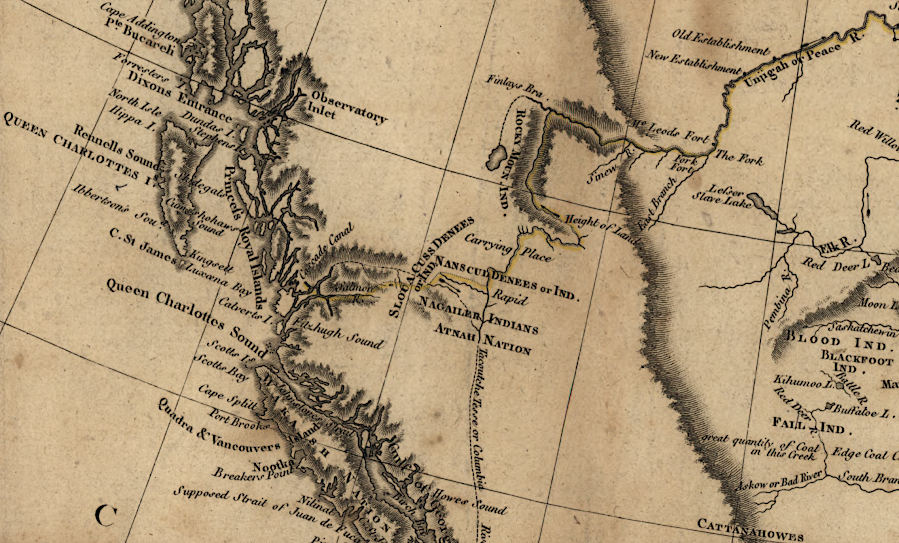
Alexander Mackenzie reached the Pacific Ocean (yellow line) a decade before Lewis and Clark
Source: Library of Congress, A map of America between latitudes 40 and 70 north and longitudes 45 and 180 west exhibiting Mackenzie's track from Montreal to Fort Chipewyan & from thence to the north sea in 1789 & to the west Pacific Ocean in 1793)
Links
References
1. "Where Does the Lewis and Clark Trail Begin?," Governing, July 3, 2022, https://www.governing.com/context/where-does-the-lewis-and-clark-trail-begin (last checked January 2, 2023)
2. Lowell Hayes Harrison, George Rogers Clark and the War in the West, University Press of Kentucky, 2001, p.9, https://books.google.com/books?id=hKsQ7yKYkaoC (last checked November 27, 2015)
3. Julie Stoner, "The Crossing of a Continent: July 14, 2023," Worlds Revealed - Geography & Maps at the Library of Congress blog, Library of Congress, https://blogs.loc.gov/maps/2023/07/the-crossing-of-a-continent/ (last checked July 14, 2023)
4. "Hunter-Dunbar Expedition," Encyclopedia of Arkansas, https://encyclopediaofarkansas.net/entries/hunter-dunbar-expedition-2205/ (last checked July 3, 2022)
Exploring Land, Settling Frontiers
Virginia Places






